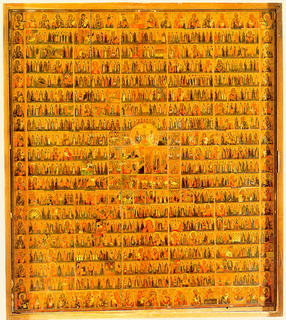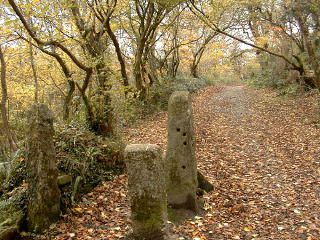
Richard Barrett, who is a member of the Antiochian Orthodox Christian Archdiocese, has written a very thought provoking article on becoming Orthodox in spite of the internet. In this article Mr. Barrett bemoans the fact that the internet is often a stumbling block to inquirers into Orthodoxy.
It is undoubtedly true that "googling", or looking up information on a search engine, has become an increasingly common way for inquirers to learn about the Orthodox faith. As Mr. Barrett rightly points out, the problem is that there are no standards regarding information on Orthodoxy that is posted on the internet.
He goes on to state that:
"There is a lot out there that the wide-eyed inquirer can easily encounter, which he or she simply will not have the spiritual maturity to deal with."
While this is true, an inquirer might also not have the spiritual maturity to deal with certain books, pastoral advice, teachings, etc. That they might encounter away from the internet as well. Not yet possessing an Orthodox mindset, which would be a normal and natural handicap to an inquirer, is also part of the problem alongside the sometimes questionable material on Orthodoxy found on the internet.
Mr. Barrett also points out that:
"no amount of information and no amount of reading is going to make one Orthodox. Knowledge will not bring one into the Church; the Holy Spirit has to do that."
and:
"...The books and websites are, plainly, no substitute for prayer, going to services, establishing a relationship with and receiving instruction from a priest."
This is very well said and needs to be heeded by all inquirers into Orthodoxy. While it may be obvious this fact is sadly all too often overlooked or forgotten.
Mr. Barrett makes the statement that:
"If you want to learn more about the Church, go to church. It's that easy, and that difficult."
Right again. It is so much easier to simply type in a few phrases or words into a search engine than to make the effort to actually visit an Orthodox church. While this statement would hold true to anyone seeking to learn more about any Christian church it is especially true of Orthodoxy. One must experience an Orthodox service to begin to comprehend it. Orthodox services engage the physical senses as well as the spiritual.
Mr. Barrett continues:
"Are there good uses of the Internet for the inquirer and
catechumen? Of course. The home pages for the canonical Orthodox jurisdictions, as well as for most individual parishes, provide a lot of wonderful information, and the outside links they provide are, in general, quite trustworthy. There are excellent resources out there with respect to the Orthodox approach to prayer, liturgical texts, setting up the home icon corner, as well as a wonderful database of the writings of the Church Fathers. Other websites have made the acquisition of previously not-so-easy-to-find liturgical items a fairly simple matter -- prayer books, icons, prayer ropes, incense, home censers, candles, recordings of the music of the Church, and so on."
This is a good point to remember. There are indeed some very good sites on Orthodoxy on the internet. The internet itself is simply a tool. Like all technology it can be used for better or worse. Someone once explained to me that the internet is like fire. Fire can be used to warm your house but it can also burn it down. Likewise use of the internet can certainly aid an inquirer in their journey to Orthodoxy but it can also hinder it. Caution and the counsel of an Orthodox Priest are definitely essential to inquirers.
Mr. Barrett further states that:
"At most, an inquirer's Orthosurfing needs to judiciously supplement, rather than supplant, their attendance at services, prayer, and talking to a priest."
Again, an obvious maxim that is often missed.
While Mr. Barrett may have become Orthodox "in spite of the internet" this not to say that all inquirers will face this same stumbling block. It is, however, a common problem encountered by inquirers. A concscious effort should be made by inquirers to place any information found on the internet in the proper perspective. This can be done by attending services, studying the prayers and liturgical texts of the church and having conversations with an Orthodox Priest.
Those seeking for information on the Orthodox Church should remember that this is to be found first and foremost in the prayers and services of the church. It is these prayers and services that one will find to be the best "search engines".

























